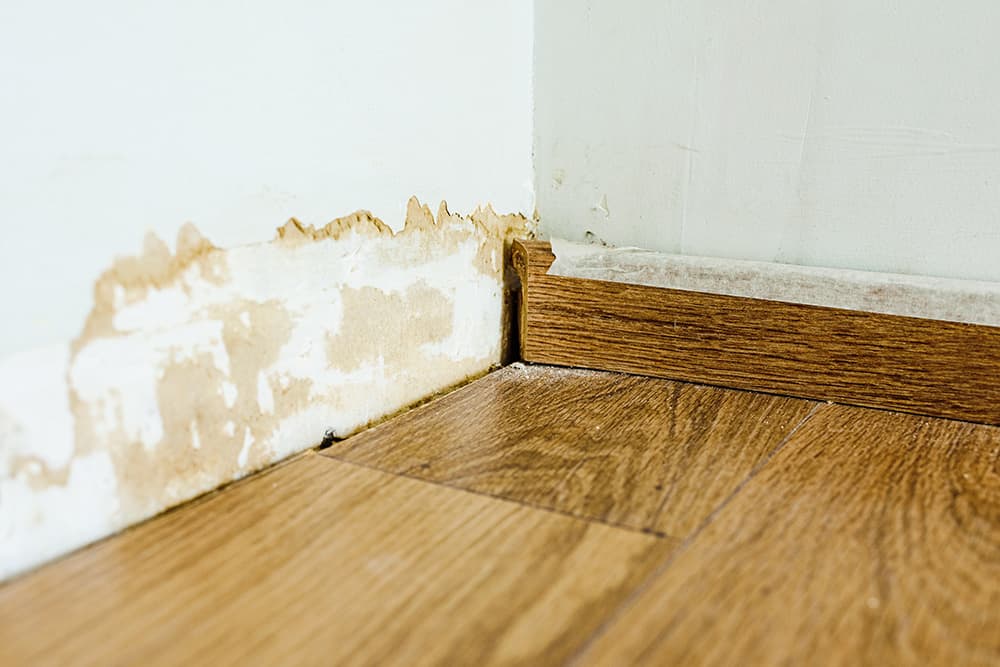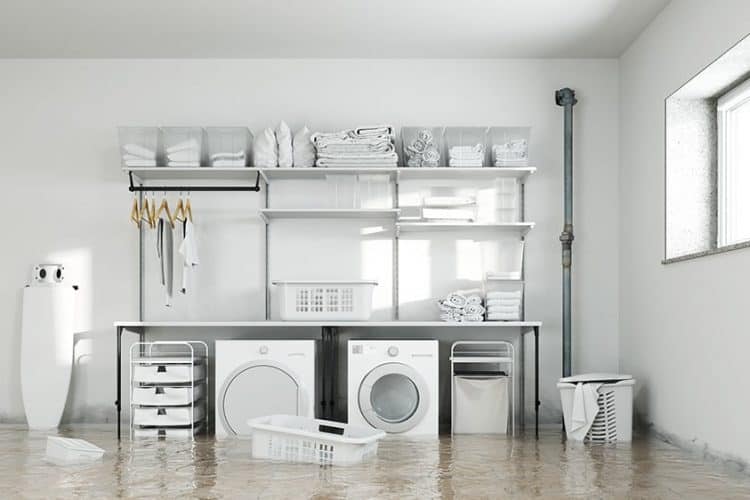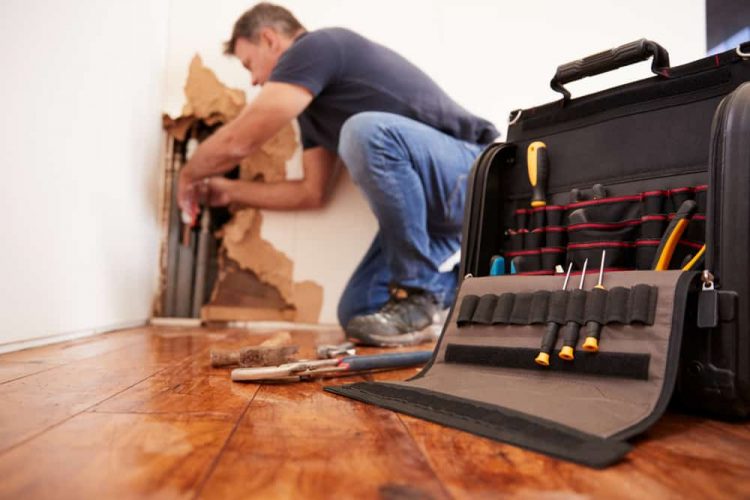
Skirting board on a wall damaged by mold.
Most homeowners have had the experience of having to replace drywall. When you are dealing with water-damaged drywall, the process requires a bit more attention to ensure that the damage does not recur and that the wall is entirely dry so that mold does not establish in the wall. You can repair a water-damaged wall yourself, but if you are unsure about the potential for mold, you should contact a professional.
If you go through the repair process and have not addressed the mold issue, it will recur and could build for some time before you notice it again. Walls are cozy, warm areas for mold and mildew to thrive, so it is critical to address water-damaged walls quickly and thoroughly.
How can you tell if there is water damage to the walls?
If you have not experienced water-damaged walls before, here are some signs you could have this problem in your home:
- There is dampness to the walls around sources of water such as your dishwasher or washing machine.
- The drywall is soft to the touch, which can indicate drywall rot.
- While you may not see any signs of water damage, you could smell a musty scent.
- There may be discoloration on the wall including rust-colored water marks or stains.
- Your paint or wallpaper is bubbling.
- You can see mold growth on the wall.
When noticing discoloration, dark spots on the walls usually mean that the water damage is fresh while yellow or chalky-colored marks usually indicate an older stain. However, even if the stain is older, that doesn’t necessarily mean the leak was fixed or the water problem was completely solved.
How to repair water-damaged walls
To perform this repair you will need some tools: scraper, putty knife, tape, new drywall, sanitizer, clean cloths, extra pieces of wood (possible), drywall screws, tape, drywall compound, primer/sealer and paint.
- Remove any damaged drywall and damp insulation. This will give you a good look at the wood to see if there is any mold build-up on the structure.
- Dry the area inside the wall and around the affected area. You can do this by using fans. Plan for 48 hours to thoroughly dry the wet area. (While you may want to get this project completed quickly, you need to start from a completely dry wall so taking this time is important.)
- Disinfect the area using a sanitizer. Spray and wipe down the area. Allow to fully dry.
- Decide if you will cut out a section of drywall area to replace, or if you will replace the entire sheet. Whichever you choose, secure the new drywall to the beams or joists. If you are cutting out a section, you can place a secure brace between your joists so that the new piece of drywall has something to adhere to when placed.
- Once the new drywall is adhered in place, tape around the new piece of drywall and apply a coat of mud to finish the seams. Let it dry and sand it smooth. You want the new piece of drywall to blend in with the existing drywall so you may need to mud, dry and sand several times to make this happen.
- Once dry, seal the repair with a primer/sealer and once the primer dries, finish with paint.
- Home Depot provides a good tutorial for repairing drywall patches – large and small. There is also a video you can watch. Home Depot rates this skill as a “beginner” level of difficulty.
Water-damaged walls often hide other issues
When an area of your home is impacted by water damage, mold can grow and spread. For walls, water damage results in a degradation of the drywall and wood framing of the room. Not only do walls provide a warm place for mold to grow, but these materials also are not designed to be water-resistant and can degrade over time. If left undetected, water that is continuing to impact your walls can also move to your floor and ceiling, causing further damage.
Call 1-800 WATER DAMAGE for peace of mind
With water-damaged walls, you are working on preventing the problem from spreading because you have to get inside the wall to ensure you can dry out the area, and that means removing drywall. Mold growth inside a wall cannot be treated from the outside of the wall.
At 1-800-WATER DAMAGE, we have helped many homeowners with water damage repair to their homes that has been caused by water.
When you have an issue with water-damaged walls, and you’re not sure how much of a problem you are facing, call a professional service. It will likely save you time and anxiety knowing that you are tackling the entire situation in your home.



